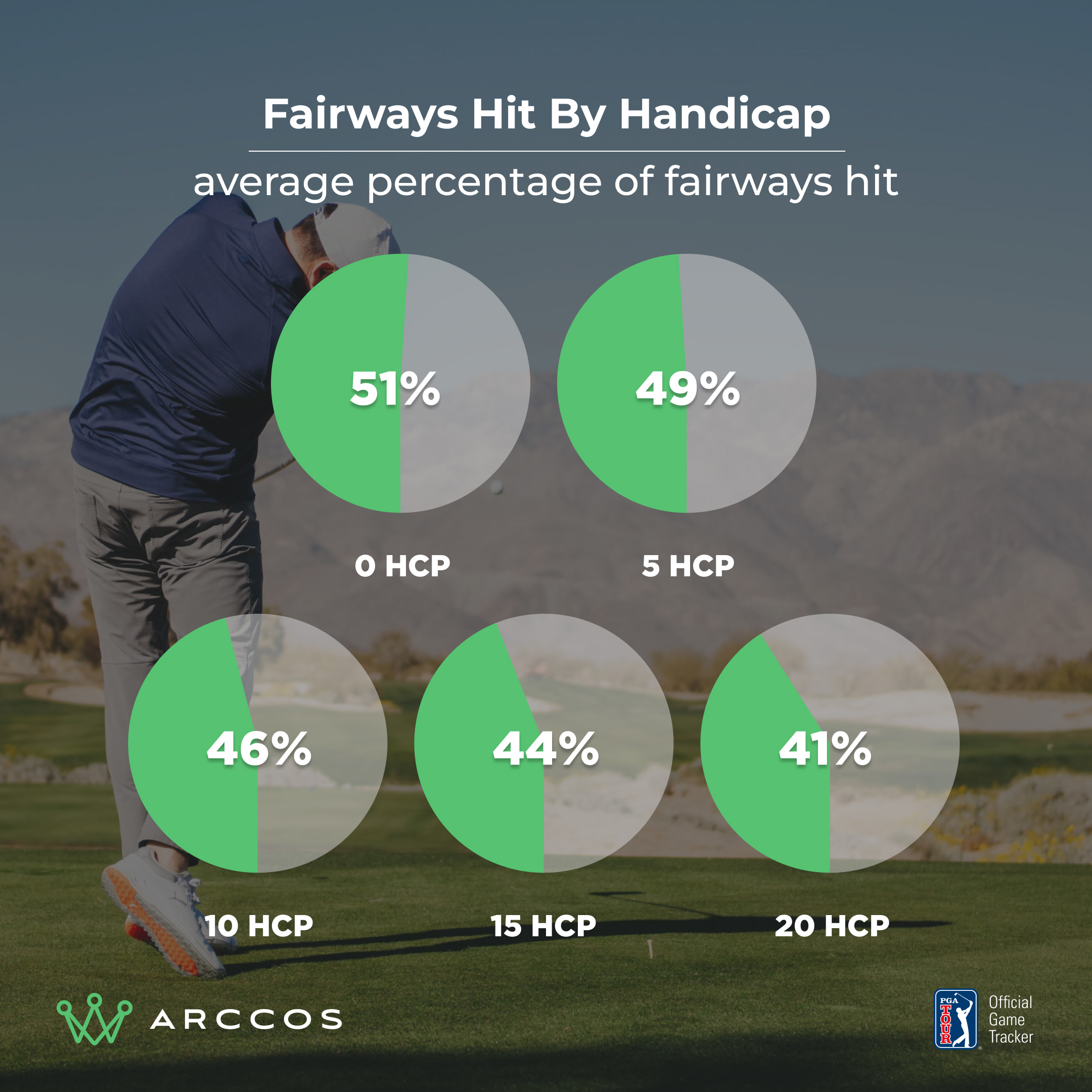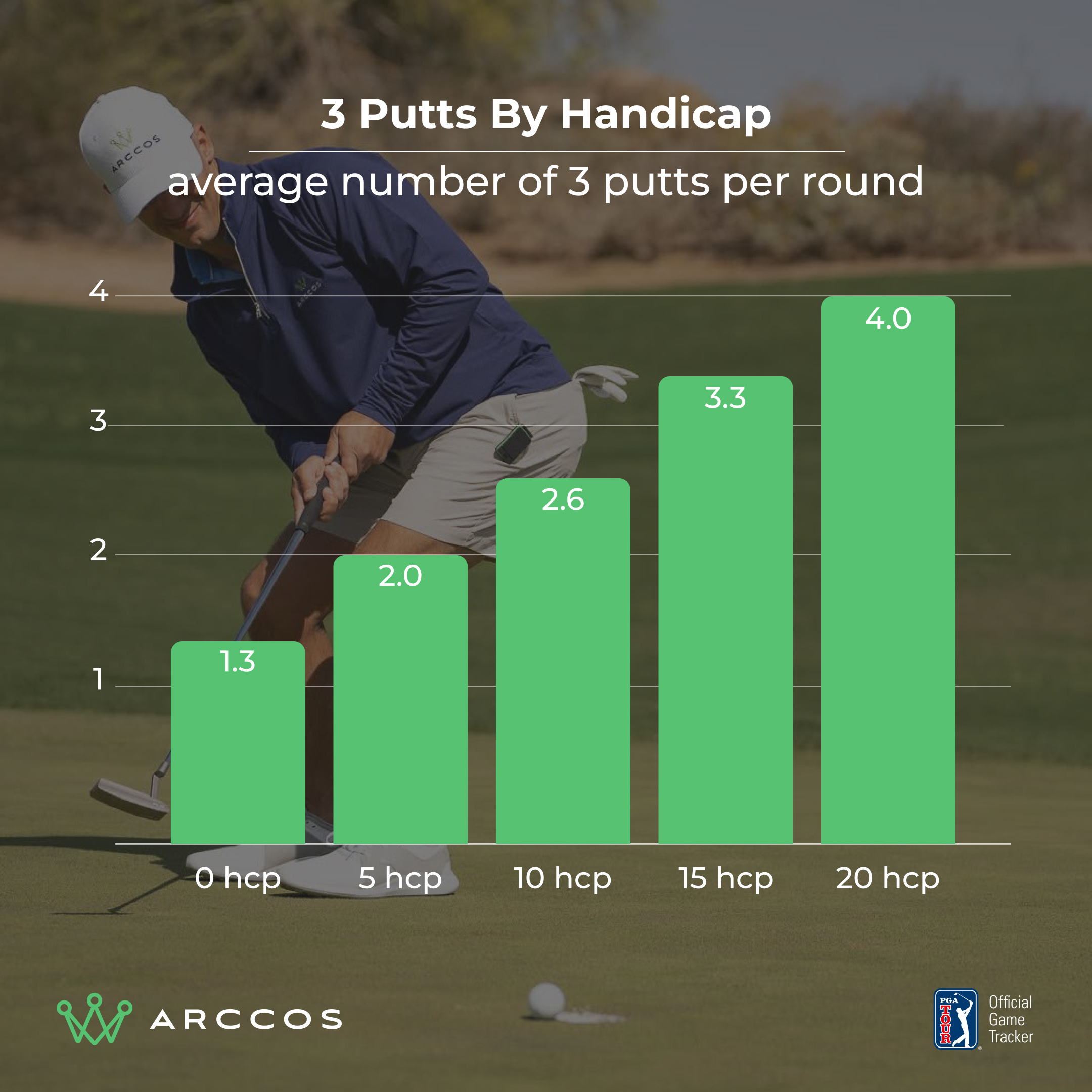Is It Better To Hit 75% Of Fairways Or Three-Putt Only Once Per Round? New Data Reveals All...
Using the latest data from Arccos, we explore which of these key areas could have the biggest impact on your scoring...


When speaking to other amateur golfers about the most important aspects of the game to focus their improvement efforts on, the responses are often conflicting. Some believe that finding the fairway with your tee shot is the crucial factor in lowering your handicap, while others believe tightening up your performance on and around the greens is the key to success.
Well, rather than spending anymore time hypothesising, I went straight to the data to settle the argument once and for all. Using the latest Arccos data, I explored whether it would be be better to hit 75% of fairways or three-putt just once per round, which threw up some interesting results...
Is It Better To Hit 75% Of Fairways Or Three-Putt Only Once Per Round?
The logical place to start here would be to separate the data for each aspect and understand its value in helping you to shoot better scores on the golf course. So, let's start with hitting fairways.
As you can see in the graphic below, the difference between the number of fairways hit by a scratch player and a 20-handicapper is just 10 percent. In fact, for every 5 shot difference in the handicap index, the average improves by just two or three percent, and the overall difference across the entire spectrum is around one fairway per round.
The PGA Tour average for fairways hit is just 54 percent, which would potentially indicate that hitting the fairway isn't necessarily a strong separating factor across the different ability levels.

Arccos data graphic showing the number of fairways hit on average per round by handicap index
Interested in discovering insights on your own game from Golf Monthly's data partner? Check out the Arccos website and use code: 'GolfMonthly' to save 15%
So, what is it that sets them apart? Let's take a look instead at the three-putt percentage stats.
As you can see in the graphic below, a scratch golfer makes around 1.3 three-putts per round as an average, compared to 4 three-putts for a 20-handicapper. That's a significant difference of 2.7 shots per round, if you assume a 2-putt is the baseline for all golfers.
Subscribe to the Golf Monthly newsletter to stay up to date with all the latest tour news, equipment news, reviews, head-to-heads and buyer’s guides from our team of experienced experts.
For every five shots on the handicap index, this figure increases by around 0.7 shots, which at face value would appear more detrimental to scoring than the differentiation between the number of fairways hit.

That becomes even more apparent when you factor in the distances that players are putting from. On average, a golfer with a 10-handicap or higher three-putts a third of the time when leaving a putt of longer than 30ft.
This value rises more quickly with higher handicap golfers, as might be expected, but that same sharp increase doesn't necessarily exist with the amount of fairways hit per round.
While there is only a ten percent difference between the number of fairways hit by a scratch golfer compared to a 20-handicapper, the difference in the number of three-putts from outside 30ft is more like 20 percent.

That would indicate that three-putting just once per round, which would be lower than the average for a scratch golfer, would have a more positive impact on your scoring than hitting 75 percent of fairways. So, next time you arrive early for your weekend comp, you might want to head to the putting green for a bit of lag putt practice.

Baz joined Golf Monthly in January 2024, and now leads the instruction section across all platforms - including print and digital. Working closely with Golf Monthly's Top 50 Coaches, he aims to curate and share useful tips on every aspect of the game - helping amateurs of all abilities to play better golf. Baz also contributes weekly to the features section, sharing his thoughts on the game we love and the topics that matter most. A member at Sand Moor Golf Club in Leeds, he looks forward to getting out on the course at least once a week in the pursuit of a respectable handicap.
Baz is currently playing:
Driver: Benross Delta XT
3-Wood: Benross Delta XT
Hybrid: TaylorMade Stealth 4 Hybrid
Irons: Benross Delta XT 5-PW
Wedges: TaylorMade RAC 60, Callaway Jaws MD5 54
Putter: TaylorMade Spider Tour
